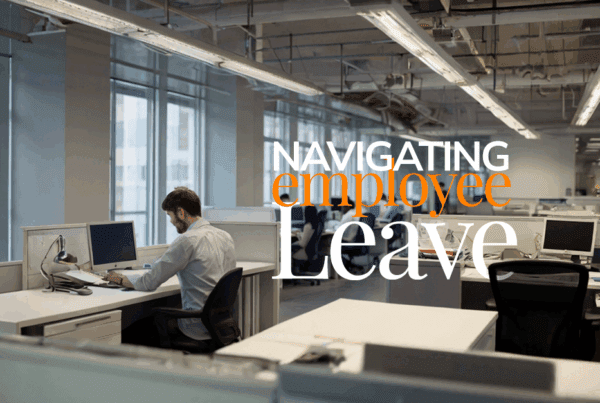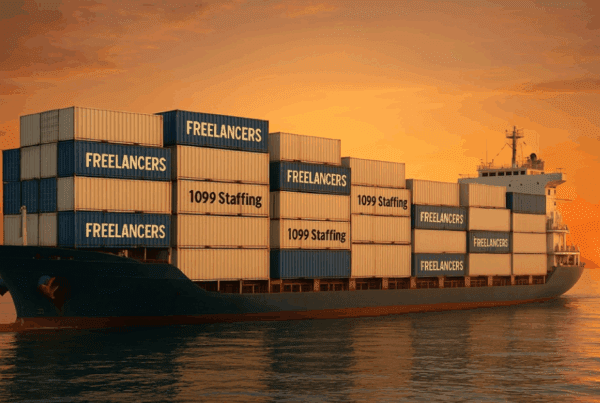
You did everything right. You combed through resumes, brought in the candidates, asked – what you thought, at least – were the right questions, onboarded your choice candidate and then… they bombed.
It’s back to the drawing board.
But not before you pay out a severance, unused vacation days and contribute to unemployment that could last up to a year.
A bad hire hurts. And more than just financially.
If the employee doesn’t perform to the agreed-upon expectations, projects pile up and work quality suffers. If the employee brings toxicity to the workplace, high-quality talent may look to leave.
No business is immune to a bad hire. A resume and one-hour interview only offer so much insight to how a candidate will perform and fit in with your organization. In order to determine if a person can successfully handle the work and work with company culture, they need to actually do the work and become familiar with the company culture. So, it makes sense that three out of four employers say they have made a bad hiring decision.
With a majority of employers getting dinged with a bad hire, you’d think there would be a solution to the problem by now. There is. But to see the benefits, you need to understand fully why a bad hire is so detrimental to a company.
A bad hire can set a company back months
The cost of a bad hire doesn’t just involve the investment put in. A company can also be hurt if the bad hire is not invested in the company, position or work. Just one disengaged employee can hold up projects and be an innovation roadblock. Deadlines are missed, work is subpar and clients are very unhappy.
Think about it this way: Just one bad hire can affect a company’s growth for an entire year.
Take CareerBuilder’s 2017 survey, which included a mix of full-time hiring managers, HR professionals and full-time workers. A chunk of employers said one bad hire affected the rest of their year. Negative consequences included less productivity (37 percent), lost time to refill the role (32 percent) and compromised work quality (31 percent).
“It’s important to note that there’s a ripple effect with bad hires,” said Rosemary Haefner, chief human resources officer at CareerBuilder at the time the survey was conducted. “Disengagement is contagious — poor performers lower the bar for other workers on their teams, and their bad habits spread throughout the organization.”
Firing a bad hire is an expensive business
The average cost of a bad hire is $14,900. However, that doesn’t mean all bad hires are in that cost range. Depending on an employee’s experience, seniority, disruption and work output, that number could reach as high as $840,000. Yikes.
Even terminating an employee after their 90-day probationary period is costly. Not only does the company lose whatever it contributed toward the employee’s salary and benefits, it loses even more money in severance payout, unemployment benefits for the laid-off employee, lost time, recruiting and onboarding a new candidate and so much more.
In 2016, Society for Human Resource Management (SHRM) found the average cost to hire an employee is $4,129. This amount includes the time it takes to fill the position, the cost per hire, average employee tenure, annual overall turnover rate, annual voluntary turnover rate and annual involuntary turnover rate.
Let’s apply SHRM’s number to a 90-day situation. Assuming it takes the average X days to fill the position, that’s an unnecessary $8,258 drained from the company in only 174 days. What could your company do with an extra $8,258?
Better yet, use a cost calculator for a more accurate depiction of the damage.
There are ways to avoid being stuck with a bad hire
Companies get bad hires because they utilize bad recruiting. A page full of professional accomplishments and an hour-long conversation aren’t close to being enough information for a hiring manager to make an informed decision. Yet, it’s how we have operated for years and still continue to operate – but not for long. A change is creeping in and it’s benefitting both employer and employee.
Within the past few years, hiring has become more innovative and efficient, thanks to looking at hiring with a new perspective and with new technology.
High-demand companies that receive a daily influx of resumes use applicant tracking systems (ATS) to sort through the resumes based on keywords or a response to what is called a “knockout question.” These types of questions are meant to narrow the talent pool by asking specific questions like salary requirements or willing to relocate for the job. ATS software has become so useful that 99 percent of Fortune 500 companies use it.
Another strategy is taking the concept of matchmaking and applying it to hiring. As we learn what makes for more efficient hiring, there are platforms popping up to fit that need. By looking at the employer/employee dynamic as a relationship, both parties are better equipped to succeed.
Increasingly popular are deep, talent-matching platforms that work directly with in-demand flexible workers. Instead of hiring for a full-time role and waiting 90 days to see if a candidate works out, business leaders are going straight to the no-strings-attached model. And it’s saving them a lot of money and time.
Flexible talent is the smartest way to go, here’s why
Flexible talent is sometimes bypassed due to self-employed individuals’ high hourly rates, and in skipping out on-demand flexible talent, you are only causing more work for yourself and your employees.
To put it bluntly: If you’ve got sticker shock, get over it.
Instead of looking at how much it will cost you per hour, look at how much it would cost compared to filling the role with a full-time employee. With flexible talent, the big picture is you get skilled talent without the baggage of salary, benefits, taxes, insurance and everything else that comes with hiring for a full-time role.
An hourly, flexible worker may have a larger salary when all is said and done, but the full-time employee is the one that’s costing their employer. What employers are quickly learning is the future is leaning toward flexible talent, with 59 million Americans taking up at least one freelance job in 2020.
Remember those talent-matching platforms from earlier? They’re utilizing that flexible talent in a way that’s efficient and cost-effective, and we will be seeing a lot more of them in the near future. (There are currently more than 300 today.) The model is thousands of dollars cheaper than traditional recruitment and flexible talent only comes with an hourly rate. No more out of your pocket than the rate and hours agreed upon.
These platforms also offer various tiers of flexible talent. FlexTal, for example, only works with the top three percent of talent. The platform sets up a rigorous vetting process and is matched only to roles that best utilize their skills and personality. The result is a faster hiring time, extra money saved, no benefits or severance and skilled flexible talent for as long or as short as you need it.
On-demand talent without strings attached isn’t too good to be true, we’ve just been fighting it for too long.
FlexTal is the #1 flexible talent matching platform. Every day, we match organizations with pro-level independent contractors for flexible hourly and project-based engagements. Match with the Right Pro, Right Now.



